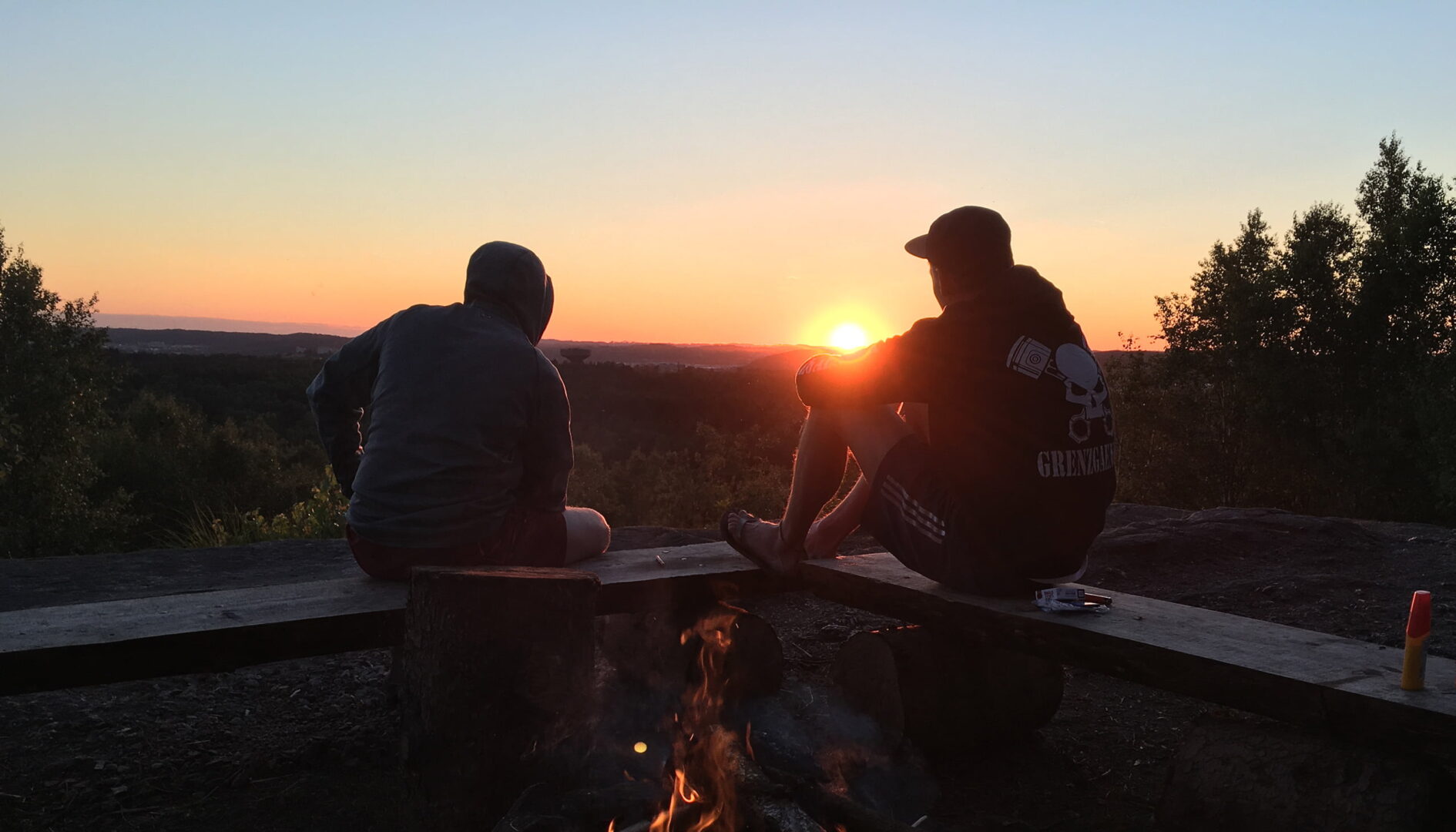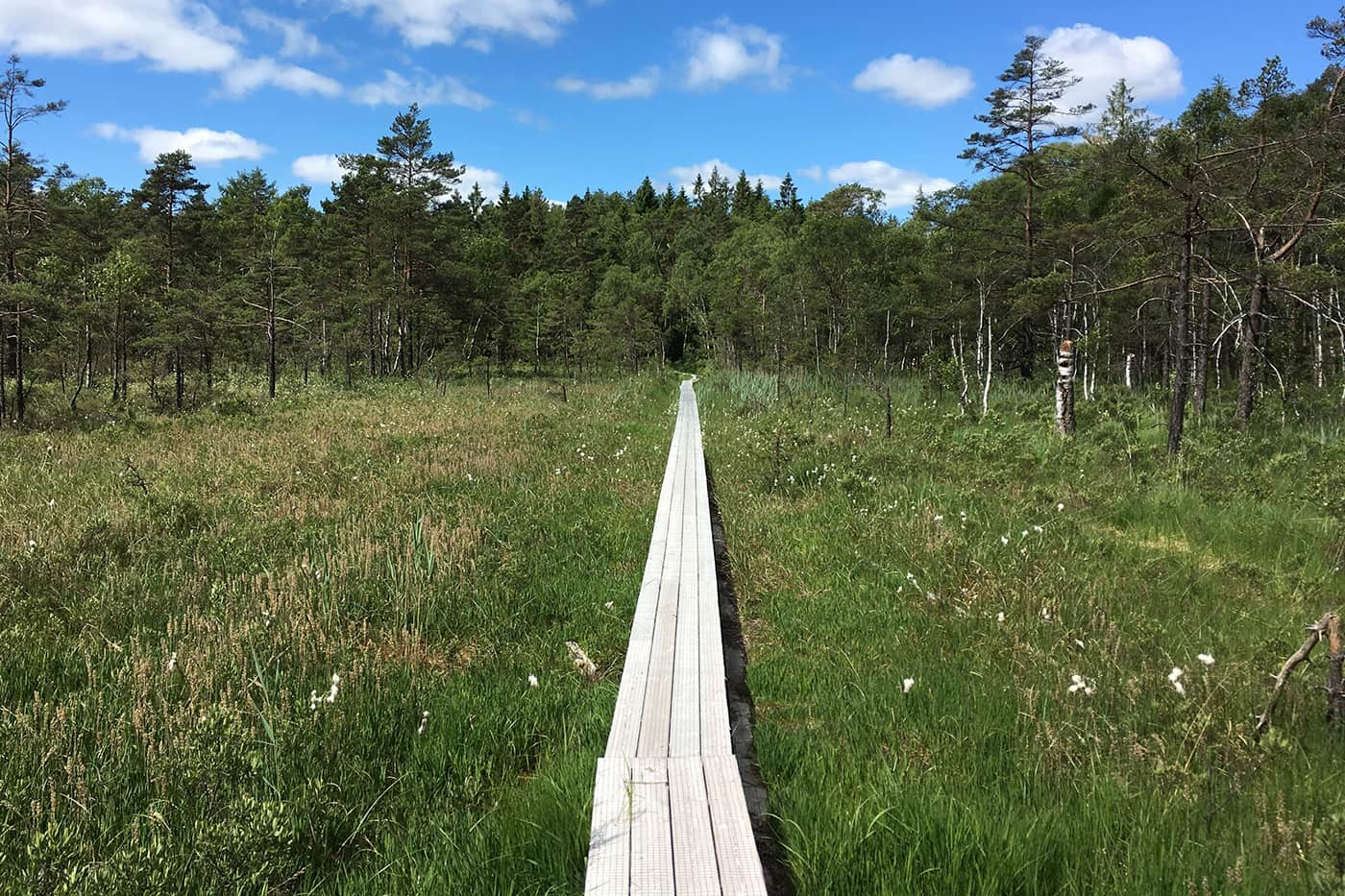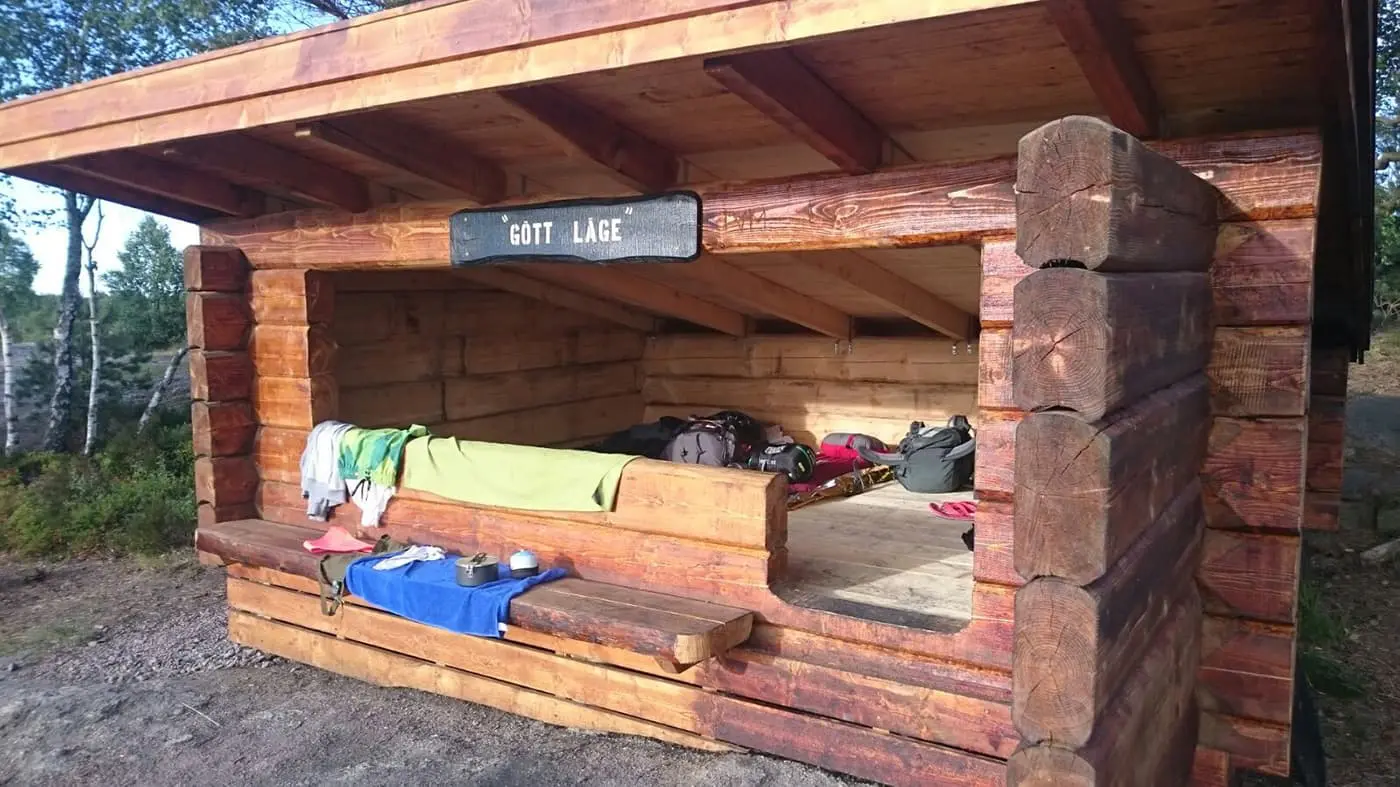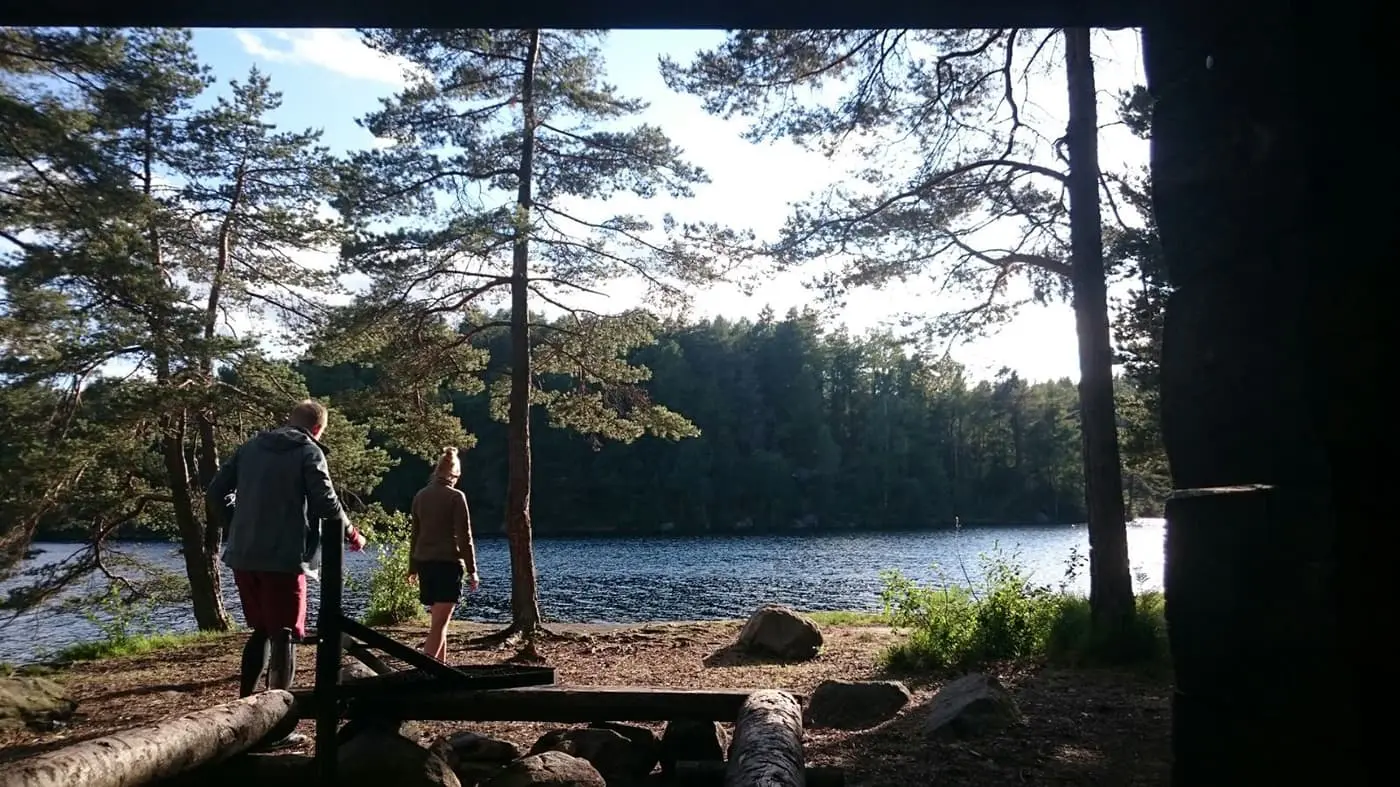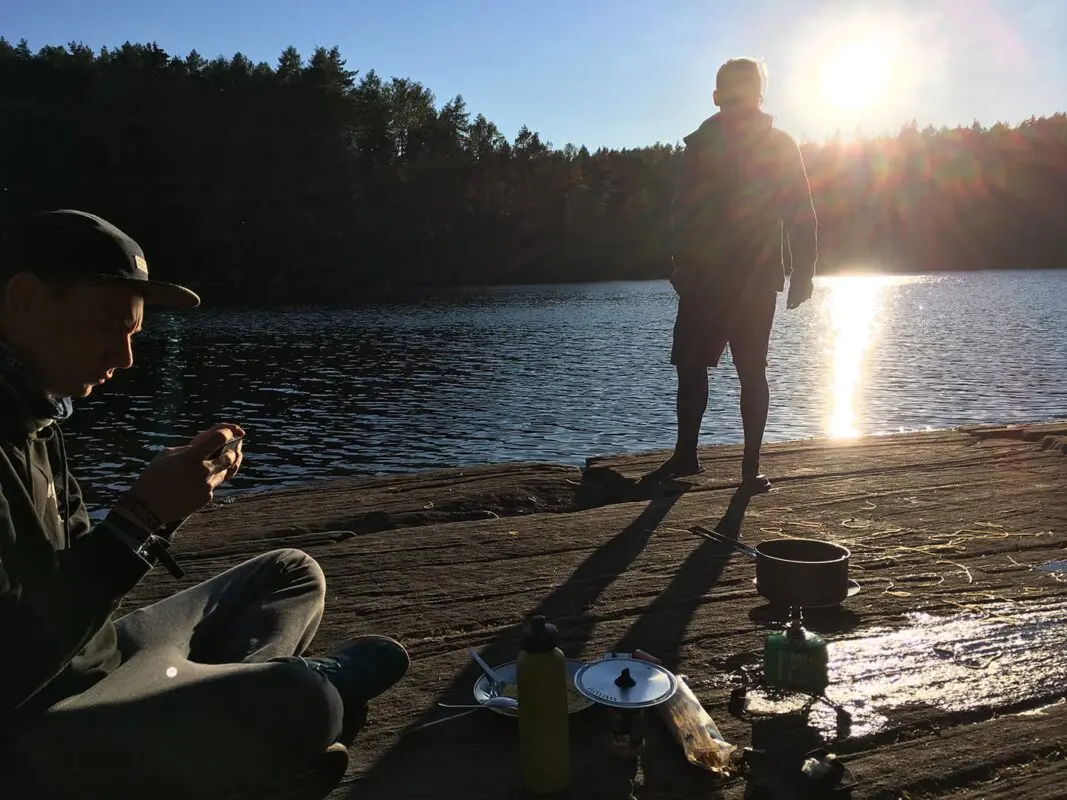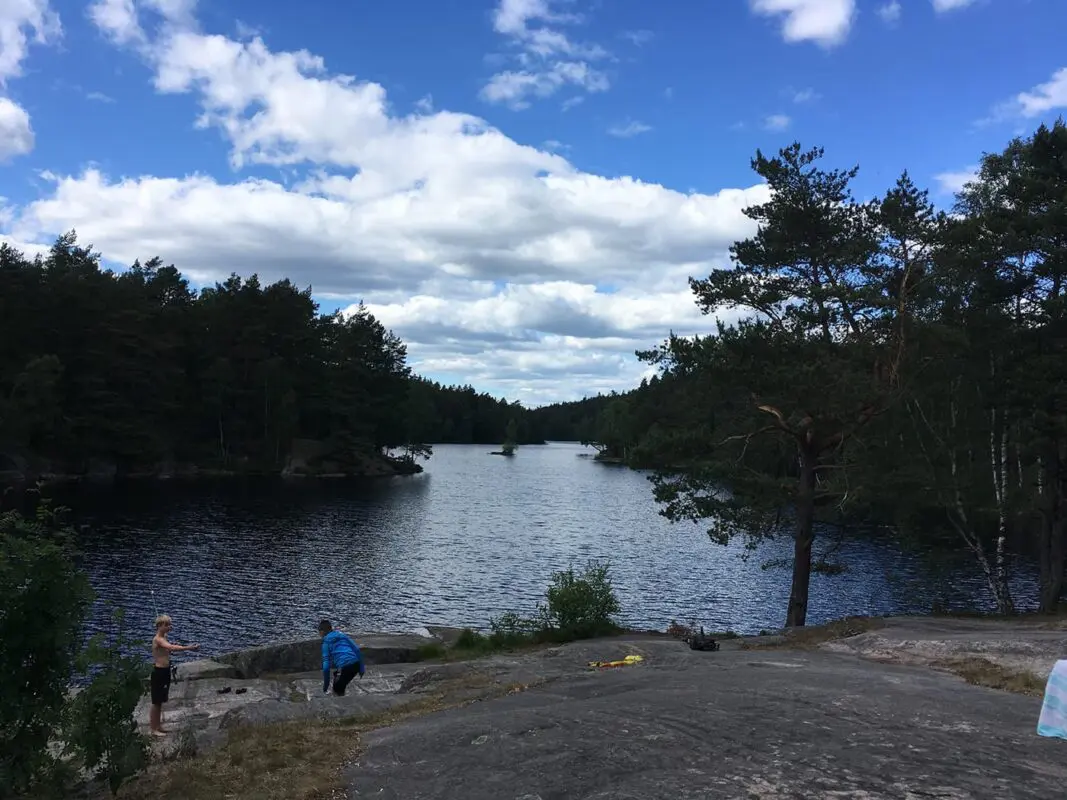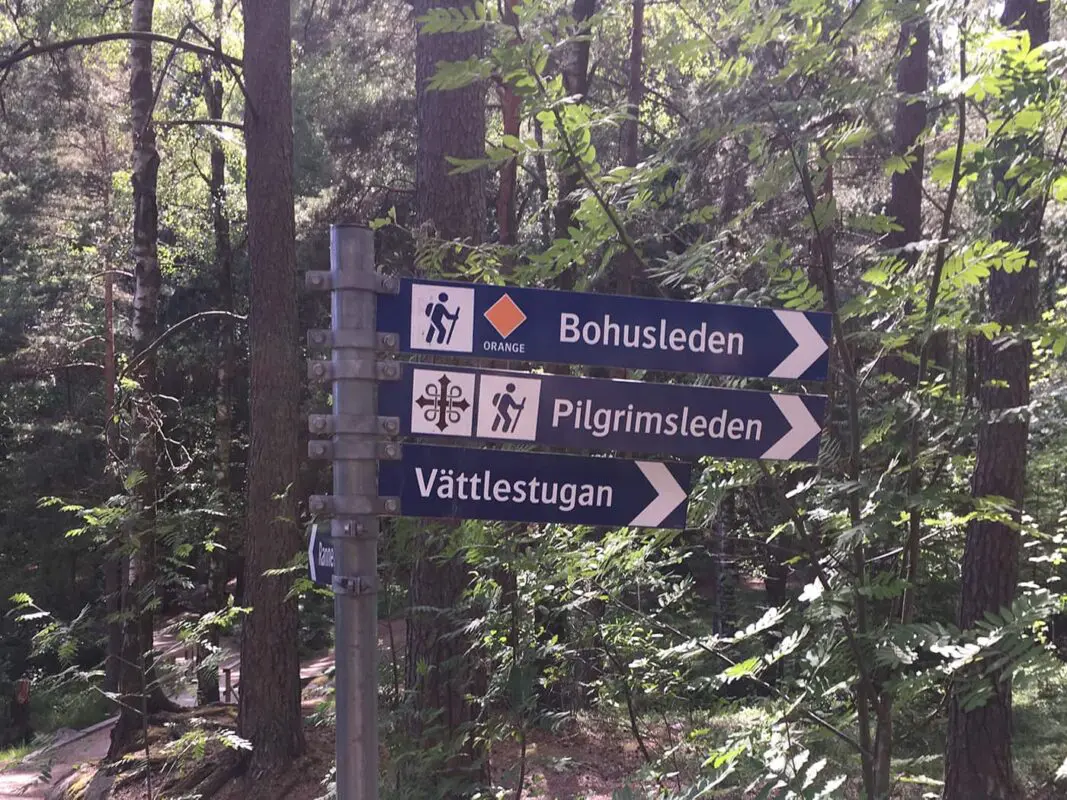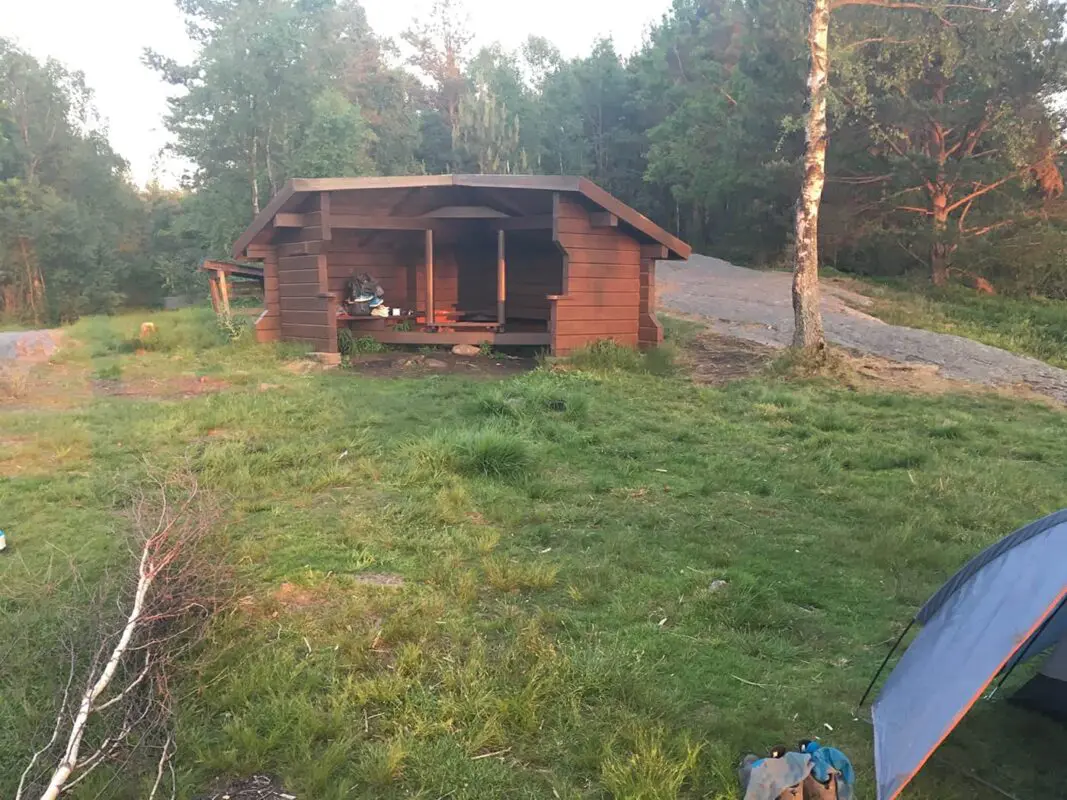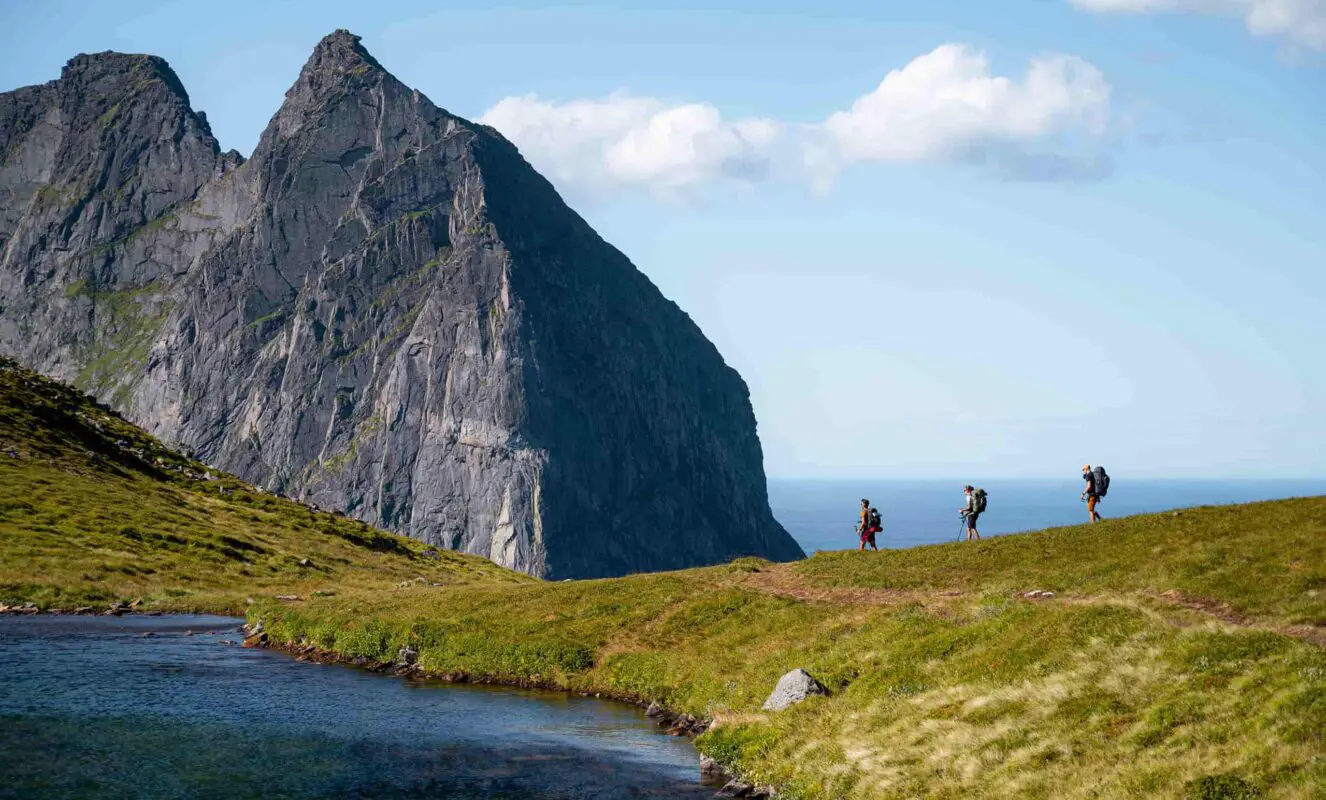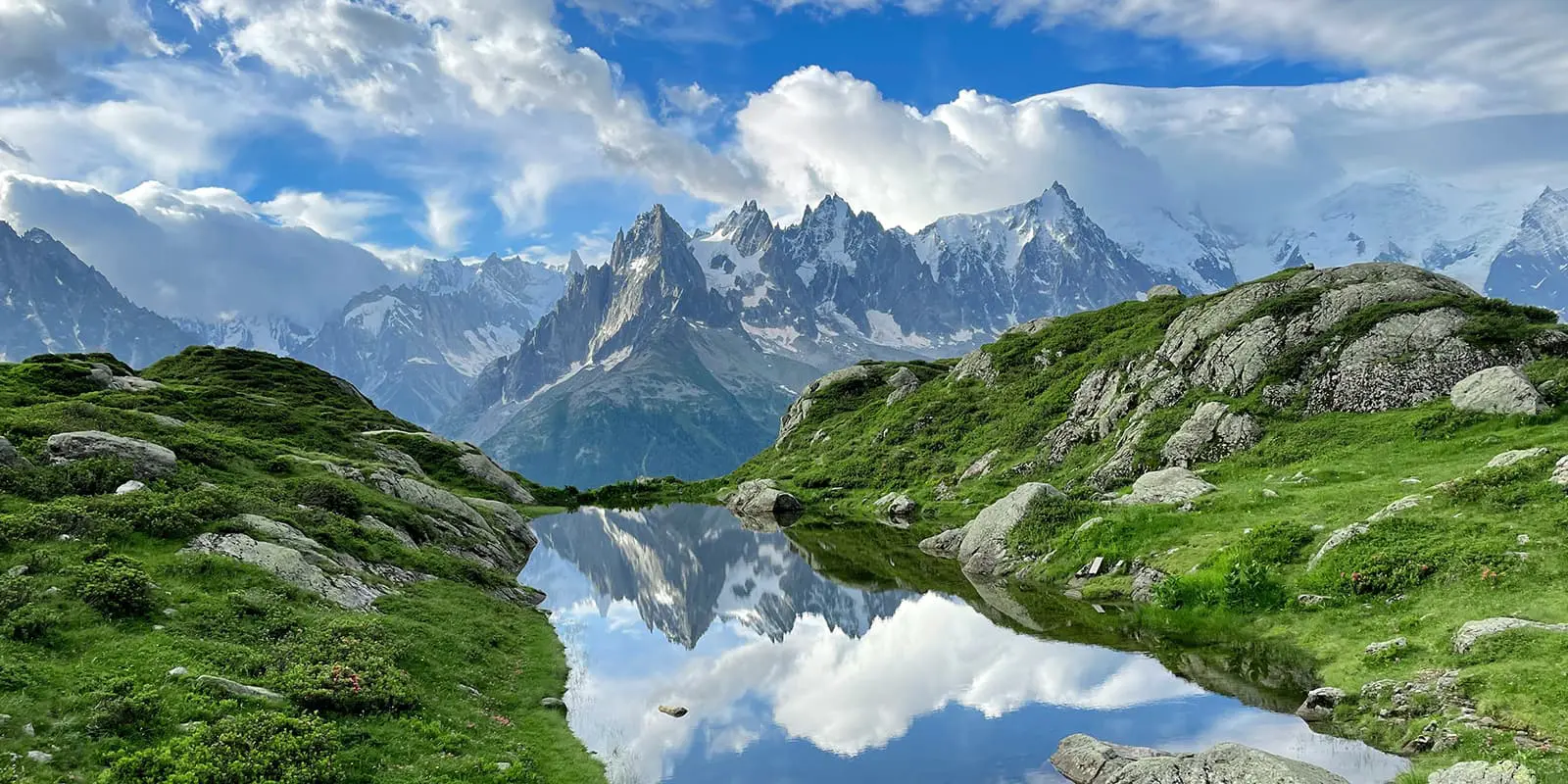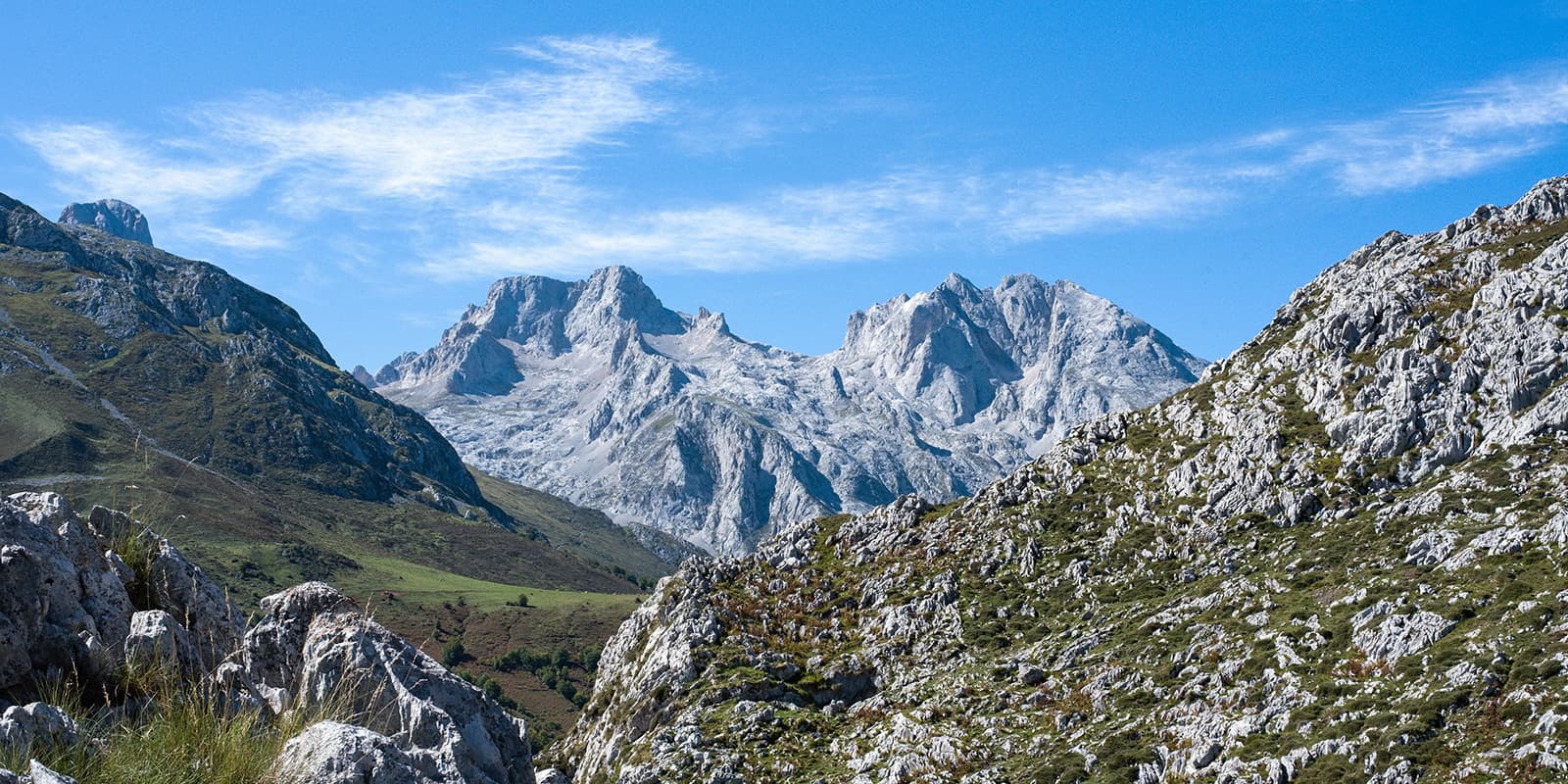Almost halfway, the trail climbs up to the wilderness of Herrestadsfjället. Here, the hike becomes a bit more challenging. Between Metsjö and Kaserna you’ll experience woodland, cliff edges, and dreamy rural landscapes.
If you’re into fishing, get a Swedish fishing license for your Bohusleden hike. You can buy one online or locally, for example, in the town of Munkedal. The Örekils River along the trail is one of southern Sweden’s best fishing waters.
Vaktarekullen, in the middle of the wilderness, is a special area where nature from the north and the south intertwine. You come across dwarf birch or arctic kidney lichen, which are usually found way up north. Two of the best overnight spots along the trail are the cottage at Vaktarekullen and the wind shelter at Stora Holmevattnet’s southern shore.
Between Flötemarksön and Porsås the Bohusleden is not contiously marked. We recommend bringing a compass and a map or a GPS. In the District of Tanum, the Bohusleden passes Älgfallet, the highest waterfall along the trail. Cross a little footbridge to enter Norway if you wish. In this part, the scenery changes into the Tolvmanstegen, a high mountainous landscape and one of the most beautiful sections. If the weather is good, you can view the sea to the west. The Bohusleden crosses through a large wind farm here (not quite like the one on the Pacific Crest Trail).
The final and steepest part of the Bohusleden leads to Björnerödspiggen, the highest mountain of the trail, 222 meters above sea level. At the top, you’ll find an impressive Bronze Age cairn, a hut/shelter, and a BBQ area.
Climb the viewing tower for some impressive views and spend the night watching a beautiful sunset. On the last stretch, before the Bohusleden ends in Strömstad, hikers can explore rock carvings from the Bronze Age in Jörlov and an impressive cave. In Strömstad, you will find restaurants, hotels, shops, and public transport back to Gothenburg.



